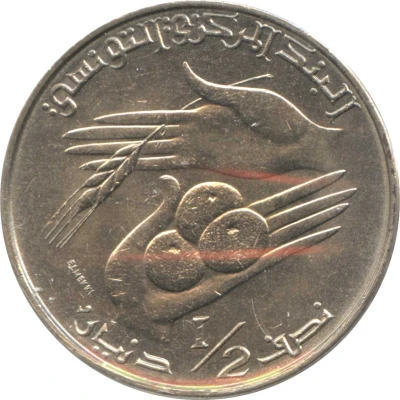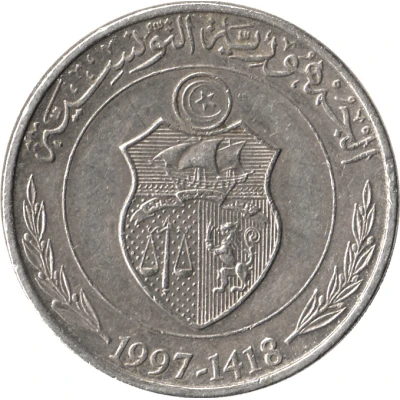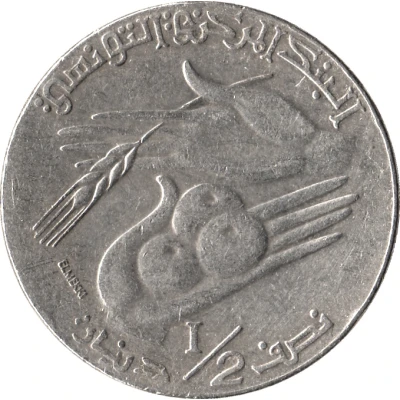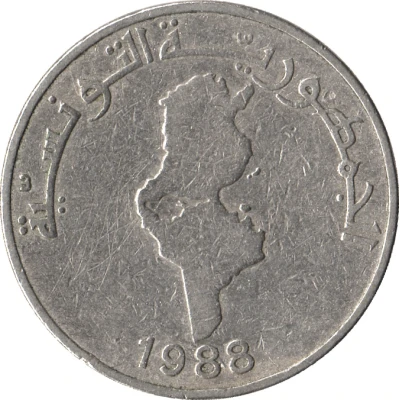
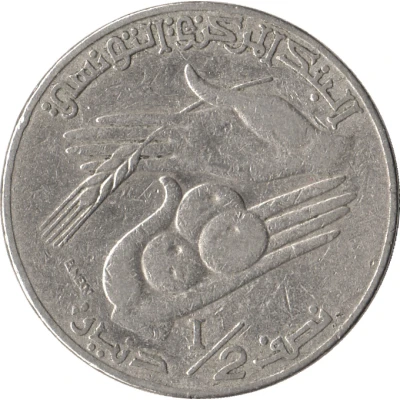

© Numista (CC BY)
½ Dinar Country map
| Copper-nickel | 8.0 g | 24 mm |
| Issuer | Tunisia |
|---|---|
| Period | Republic (1957-date) |
| Type | Circulating commemorative coin |
| Years | 1988-1990 |
| Value | ½ Dinar (دينار) ½ TND = USD 0.16 |
| Currency | Dinar (1958-date) |
| Composition | Copper-nickel |
| Weight | 8.0 g |
| Diameter | 24 mm |
| Thickness | 2.20 mm |
| Shape | Round |
| Technique | Milled |
| Orientation | Coin alignment ↑↓ |
| Updated | 2024-10-08 |
| Numista | N#1201 |
|---|---|
| Rarity index | 6% |
Reverse
Agriculture Produce (Wheat Stalk - Oranges) (Joining hands for development)
Script: Arabic
Lettering:
البنك المركزي التونسي
ELMEKKI
نصف 1/2 دينار
Translation:
Central Bank of Tunisia
ELMEKKI
Half ½ Dinar
Engraver: Hatem El Mekki
Edge
Plain
Comment
Mintages according to Krause:1988: Unknown
1990: 300,000
Interesting fact
The ½ Dinar coin from Tunisia, issued between 1988 and 1990, features a unique design that showcases the country's map on one side and the national emblem on the other. This coin was made of copper-nickel and weighs 8.0 grams. What's interesting about this coin is that it was circulated during a time of significant political change in Tunisia. The coin was introduced in 1988, just a year after the country's president, Habib Bourguiba, was overthrown in a bloodless coup. The new government that took over, led by Zine El Abidine Ben Ali, implemented several economic and political reforms, which had a significant impact on the country's economy and society. Despite the changes, the coin remained in circulation until 1990, serving as a symbol of Tunisia's rich history and culture.
Price
| Date | Mintage | VG | F | VF | XF | AU | UNC |
|---|---|---|---|---|---|---|---|
| 1988 | 3000000 | - | - | - | - | - | - |
| 1990 | 8000000 | - | - | - | - | - | - |
Values in the table are based on evaluations by sales realized on Internet platforms. They serve as an indication only for ½ Dinar (Country map) 1988-1990 coin.

